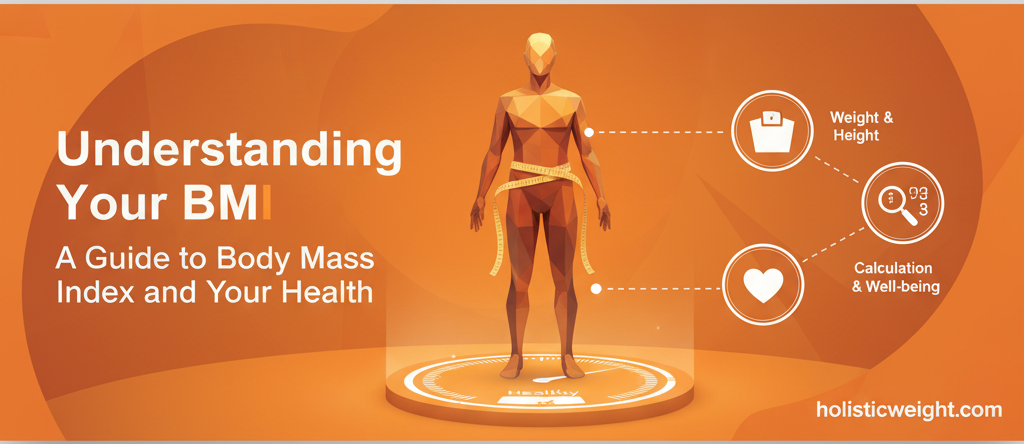
“Take care of your body. It is the only place you have to live.” – Jim Rohn, American entrepreneur and speaker.
When it comes to one’s health, numbers are just as important as words. Heart rate, cholesterol levels, blood pressure – they all communicate about the state of your body. But there is one number that people know little about, and that is Body Mass Index (BMI). The calculation of body mass index might sound sophisticated, but you do not need to be a mathematician to understand it. It is surprisingly quick, simple, and insightful. According to 2019 statistics, high BMI was associated with 160 million disability cases and was responsible for over five million deaths worldwide. This makes the calculation of body mass index of great public health significance. In this post, we will explore this fascinating health metric that has been helping people determine potential future health issues2, particularly focusing on the calculation of body mass index, why it matters, and how one can use it as a tool for better health.
So, what exactly is BMI?
Body Mass Index is like your body’s report card – a quick calculation that tells a person whether their weight is in a healthy range for their height. It is not a perfect measure, but it is a fantastic starting point for understanding one’s overall health status. The famous Hippocrates once said that natural forces within us are the true healers of disease. Understanding the calculation of Body Mass Index is one small step towards harnessing those natural forces and taking charge of one’s health journey.
Ready to calculate your own BMI? Let us do it!
Developed by a Belgian-born sociologist, astronomer, and mathematician, Lambert Adolphe Jacques Quetelet, the calculation of Body Mass Index is surprisingly straightforward, and you only need to know two numbers: your weight in kilograms (kg) and your height in meters (m).
The Formula
- BMI = kg/m2
Let us walk through a real example where the person weighs 80 kg and measures 1.8 m tall.
- First, square the height: (1.75)2 = 3.24
- Second, divide the weight by that number: 80 ÷ 3.24
- It is done, the BMI is 24.7
What does your BMI number mean?
Once you have mastered the calculation of body mass index, here’s how to interpret your results as per the current cut-off points of each category, as determined by the World Health Organization (WHO) 2:
- Severely Underweight: <16 kg/m2
- Underweight: 16.0 to 18.4 kg/m2
- Normal weight: 18.5 to 24.9 kg/m2
- Overweight: 25.0 to 29.9 kg/m2
- Moderately Obese: 30.0 to 34.9 kg/m2
- Severely Obese: 35.0 to 39.9 kg/m2
- Morbidly Obese: ≥40.0 kg/m2
For our example, a BMI of 24.7 falls under the Normal Weight category.
Why BMI matters (And why it doesn’t tell the whole story)
The calculation of body mass index gives healthcare professionals and consumers a quick and cost-effective screening tool to identify potential weight-related health risks, including obesity, type 2 diabetes, eating disorders, high blood pressure, nutritional deficiencies, hyperlipidemia, and others2, 3. It is like having a perfectly working compass – useful for general direction, but not the only navigation tool one should have
Now, let’s be real—BMI is not perfect and has its limitations. BMI estimates fat composition ineffectively. It doesn’t distinguish between muscle and fat, doesn’t account for bone density, given that muscles and bones have a higher density than fat3. This creates inconsistencies whereby a bodybuilder can have a high BMI due to muscle mass, and not because of being overweight. Because of this, experts recommend using BMI calculations as a guide, not gospel, and hence, it should be paired with other indicators like body composition, body fat percentage, waist-to-hip ratio, and waist circumference4.
Insider secrets for accurate BMI Calculation
If you want to correctly nail your calculation of body mass index, here are some pro tips.
- Use consistent units: Stick to the metric system.
- Timing matters: Weigh yourself in the morning.
- Measure height properly: Without shoes, stand straight against the wall.
Making the most of your numbers
Once you are familiar with BMI, the next step is action. If you’re in the healthy range, celebrate and keep up the good habits! If your BMI suggests overweight or obesity, you can access our page for weight loss offerings here. Remember, it is health that is real wealth and not pieces of gold and silver. So, take that weight scale, tape measure, and calculator, run the numbers, and see where you stand.


